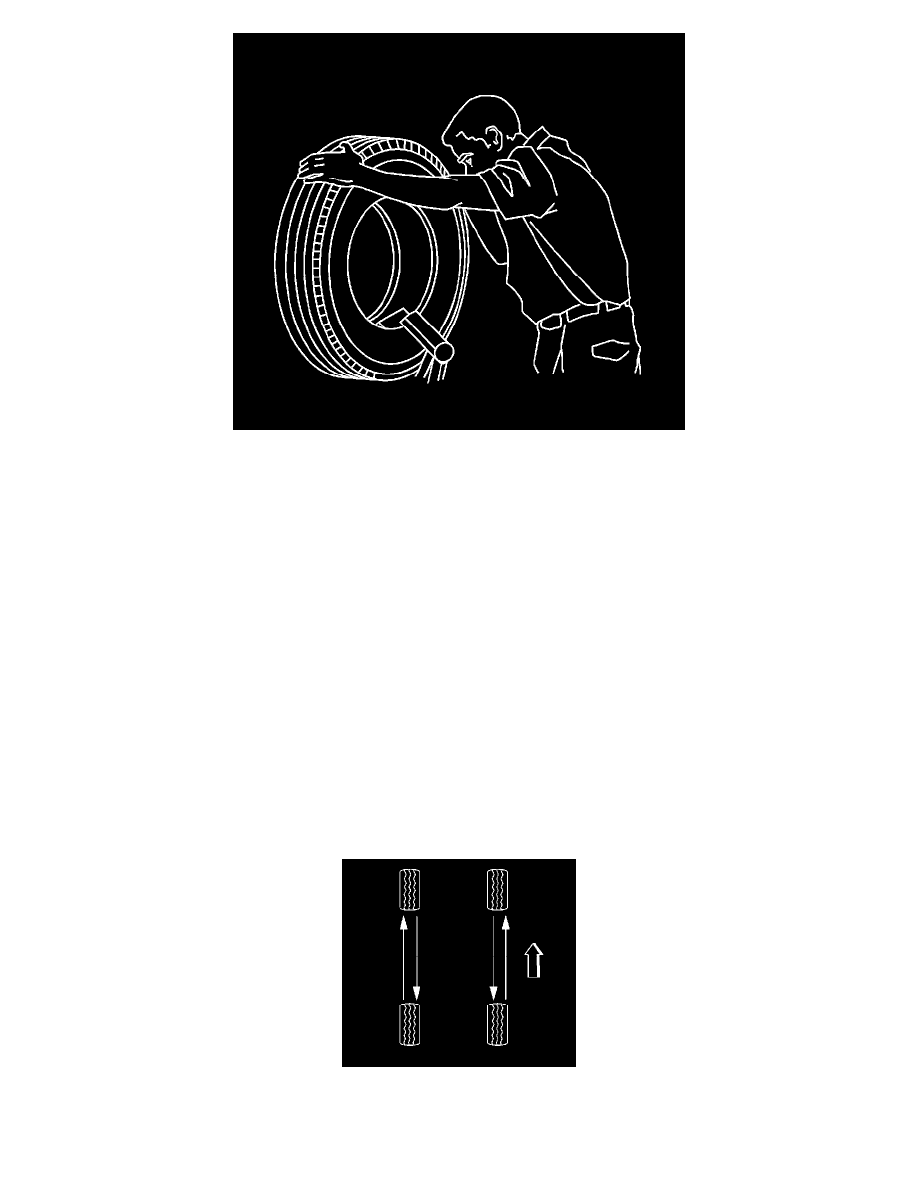Vibe FWD L4-2.4L (2009)

1. After remounting and inflating the tire, check both beads, the repair and the valve with a water and soap solution in order to detect leaks.
2. If the tire continues to lose air, the tire must be demounted and reinspected.
3. Balance the tire and wheel assembly. Refer to Tire and Wheel Assembly Balancing - Off Vehicle (See: Testing and Inspection/Symptom Related
Diagnostic Procedures/Vibration Diagnosis and Correction/Repair Instructions/Tire and Wheel Assembly Balancing - Off Vehicle).
For additional tire puncture repair information, contact:
Rubber Manufacturers Association (RMA)
1400 K Street, N.W., Suite 900
Washington, DC
20005-2403
Tire Rotation
Tire Rotation
Rotate the tire and wheel assemblies at frequent intervals in order to equalize tire wear. In addition to scheduled rotation, rotate the tire and wheel
assemblies whenever the tires are worn unevenly.
Radial tires tend to wear in the shoulder area, particularly in the front positions. Radial tires in non-drive positions may develop an irregular wear pattern
that may increase tire noise. This makes regular rotation especially necessary.
1. Remove the tire and wheel assemblies. Refer to Tire and Wheel Removal and Installation (See: Service and Repair).
2. Rotate the tire and wheel assemblies using a 4-wheel rotation pattern.
3. Install the tire and wheel assemblies. Refer to Tire and Wheel Removal and Installation (See: Service and Repair).
4. Measure the tire pressure. If necessary, adjust the tire pressure to the specification on the tire placard, which is on the driver's door lock pillar.
